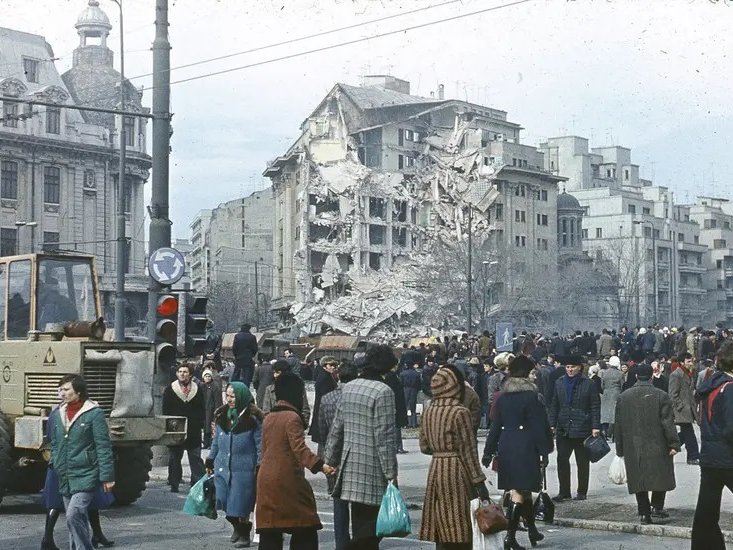The 1977 earthquake and Bucharest today – what collapsed and what lessons remain unlearned

By Bucharest Team
- Articles
On March 4, 1977, at 9:22 PM, Romania was struck by the strongest earthquake of the 20th century. Measuring 7.2 on the Richter scale, with its epicenter in the Vrancea region, the quake lasted about 55 seconds. In Bucharest, the consequences were catastrophic: 1,424 people lost their lives, more than 7,000 were injured, and dozens of buildings collapsed or became unusable.
Bucharest in ruins
The most affected were old buildings, many constructed before World War II, with fragile structures and shallow foundations. Iconic blocks such as the Scala on Magheru Boulevard, the Continental-Colonadelor, the Nestor building, and Casata collapsed almost instantly. Numerous other structures along Magheru, Republicii (today Elisabeta) Boulevard, and the Armenian Quarter were destroyed.
Industrial facilities, warehouses, schools, and hospitals were also damaged. Beyond the human and material losses, the earthquake exposed the fragility of a city caught in the midst of rapid communist-era expansion.
Authorities’ response and reconstruction
Nicolae Ceaușescu’s regime turned the tragedy into an opportunity for political consolidation. Rehabilitation programs were launched quickly after the quake but were often chaotic and selective. Many historic buildings were demolished and replaced with standardized housing blocks, architectural value being sacrificed for speed and political control.
Lists of vulnerable buildings were drafted, but many remained only on paper. By the 1980s, the regime’s attention had shifted toward the “systematization” of the capital and the construction of the Palace of the People, rather than strengthening seismically at-risk buildings.
Bucharest today: the same vulnerability
Nearly half a century later, the capital faces the same risks. Data from Bucharest City Hall show that:
- over 370 buildings are classified as seismic risk class I (“red dot”), meaning they are at major risk of collapse;
- around 800 buildings fall under class II;
- thousands of other pre-1940 buildings have not yet been structurally assessed.
The most exposed areas remain the historic center, Magheru and Kogălniceanu boulevards, as well as the Armenian, Moșilor, and Știrbei Vodă neighborhoods, where clusters of old buildings survive. Even blocks built in the 1960s–70s, once considered safe, now show serious degradation due to decades of poor maintenance.
Critical infrastructure
The problem is not limited to housing. Many hospitals still operate in vulnerable buildings, including Floreasca Emergency Hospital, Bagdasar-Arseni Hospital, and the Cantacuzino Institute. Several schools and high schools in central Bucharest—such as Mihai Eminescu College or Cantemir Vodă High School—are also listed as at seismic risk.
Lessons unlearned
Experts warn that if a quake similar to that of 1977 were to hit today, the toll could be even higher due to:
- higher population density,
- chaotic new construction, often bypassing safety regulations,
- aging public infrastructure (water, gas, electricity networks).
Meanwhile, consolidation programs move at a painfully slow pace: in the past three decades, only a few dozen buildings have been rehabilitated, while the list of unsafe ones continues to grow.
The 1977 earthquake brutally revealed how unprepared Bucharest was for a natural disaster. Forty-seven years later, the city is larger, denser, and in many respects just as vulnerable. The absence of a coherent strategy and long-term investment means that the lessons of that night remain largely forgotten. The real question is not if another earthquake will strike, but how prepared the authorities and the community will be to face it.






























